- Bernard Preston homepage
- Legumes
- Broad Bean Pests
Broad bean pests
Broad bean pests can ruin your crop in very short order, but the good news is that they can be managed organically, and by rotational planting.
Broad beans are such important allies on the way to greater wellness. Not only are they the highest source of vegetable protein, but one of the very few sources of L-dopa. Eat them regularly and you are far less likely to suffer from Parkinson's disease.
Dopamine is also produced in the gut so a happy tum is very important; that means a flourishing microbiome, those bugs that contribute so much to wellness.
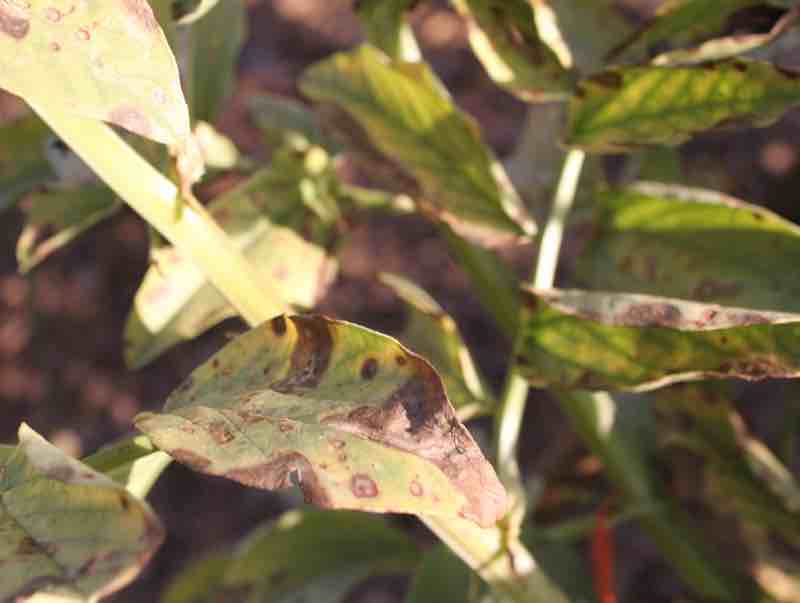
Chocolate spot disease
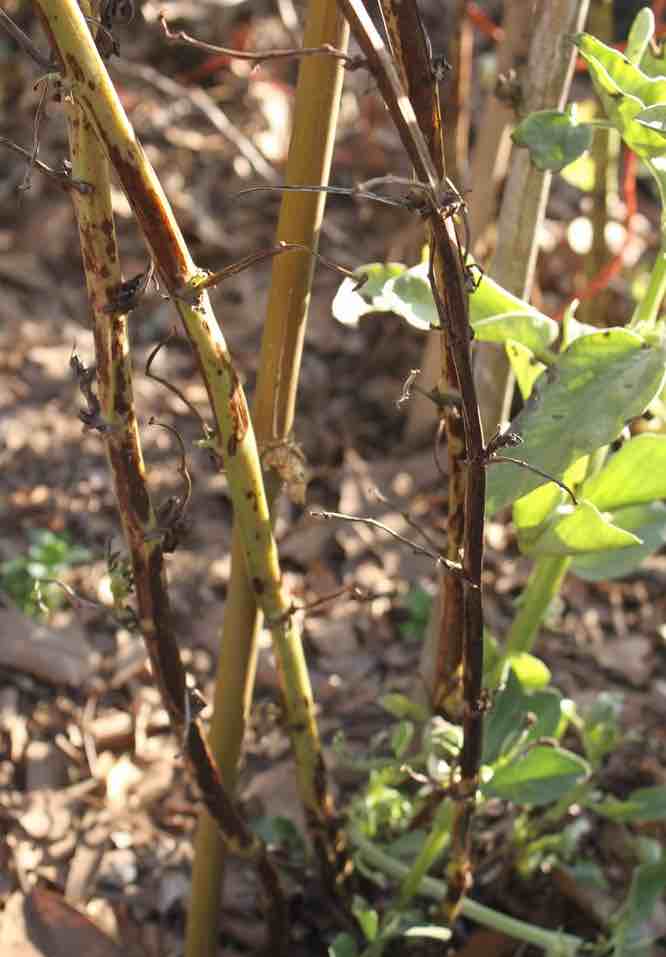
Chocolate spot disease is caused by a fungus called botrytis fabae that will destroy the plant. Once badly affected the broad bean is unlikely to produce fruit and, if it does, the pod goes ugly with black spots.
Do not place any of the affected plant onto the compost heap; send it to the dump or burn it.
Since we run an organic garden, and will not use poisonous sprays, there are three modes of attack.
- Cut back any affected branches; they won't bear anyway. Sterilise your secateurs in dish-washing liquid. This may save some of the other branches. Just dispose of badly affected plants completely.
- Always
plant in a new area; practise crop rotation. The spores get into the
ground and will affect the plants for the next year or two.
- You will find that some plants are resistant and seem hardly affected. Keep the seeds from these plants for the next season.
- According to John Harrison potash helps to prevent the fungus; woodash is a good natural source.
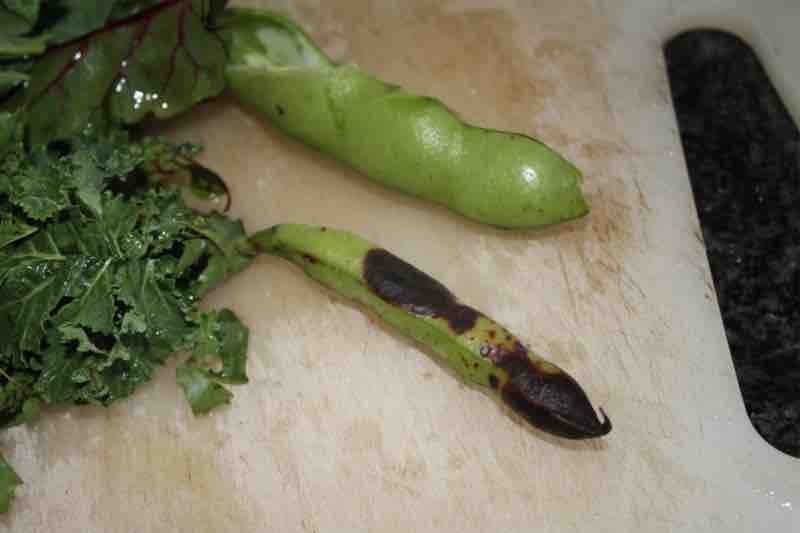
Blackfly
Broad bean blackfly is a pernicious insect, an aphid that attacks the tender young shoots and flowers right at the tip of the growing stem. I suspect it carries viruses and other pathogens with it, as unless you tackle the problem quickly it is most unlikely to bear again.
- Aphis fabae is its scientific name.
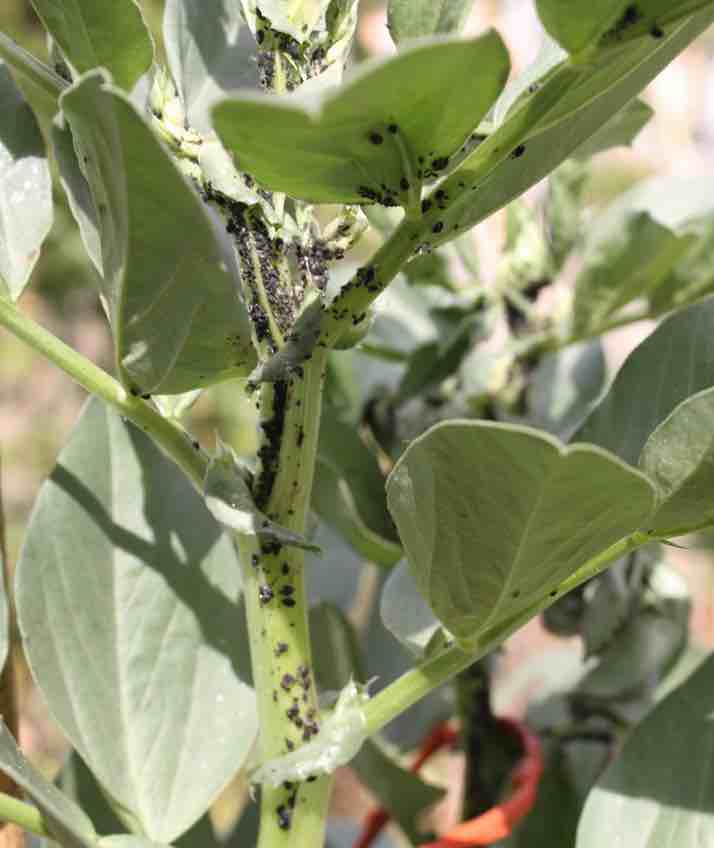
There are four modes of attack against this nasty fly.
- Prevention. Snip off the top shoot; it makes a wonderful green and you can cook and enjoy it in a similar way to spinach. Certainly if you see any signs of the fly, treat all the surrounding plants in this way. They still flower lower down and the bug fancies the more established shoots far less.
- Using a jet of water from the hose, simply work the backfly off with your fingers. Repeat a day later. This is surprisingly effective.
- And then after the water jet treatment, spray the affected area with white oil, only you must increase the concentration by 50%. It is not a poison but asphyxiates the insects; very easy to manufacture from dish-washing liquid and a light vegetable oil.
- Growing parsnips and carrots between the broad beans is known to help greatly. Black fly is the favourite food of the wasps that favour the umbels of flowers.
If you decide to go for amputation, and snip off the affected shoots, place them in a paper bag such as a potato pocket and burn it.
Broad bean pests
- Vicia faba - broad beans
- Aphis fabae - the black fly
- Favas - the name for broad beans in much of the world.
Broad beans pests flourish in hot, humid weather so they are often grown in mild winters rather than summer; they will however grow year round.
Broad beans are my favourite legume; well, dried chickpeas are a hot favourite too.
The advantage of green legumes is that they have far less of the anti-nutrients that come in for much negative publicity. I personally do not have a problem with them; simply rinse the dried seeds several times, both before cooking and after.
Despite the broad bean pests they are relatively easy to grow and provide with daily plant protein, and just as important a very important compound called L-Dopa. Have you heard of Parkinson's disease?
How to plant broad beans is a very important page at this site.
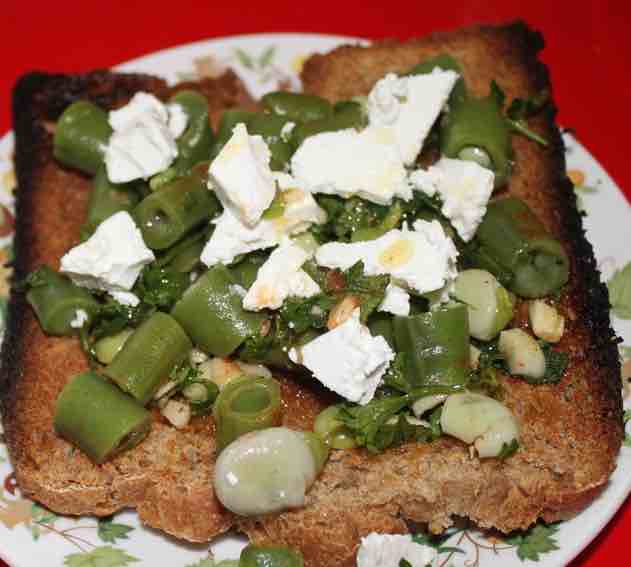
This broad bean bruschetta is a favourite antipasta at our home.
Newsletter
Our newsletter is entitled "create a cyan zone" at your home, preserving both yourself and Mother Earth for future generations; and the family too, of course. We promise not to spam you with daily emails promoting various products. You may get an occasional nudge to buy one of my books.
Here are the back issues.
- Lifestyle and ideal body weight
- What are ultra-processed foods?
- Investing in long-term health
- Diseases from plastic exposure
- Intensive lifestyle management for obesity has limited value
- A world largely devoid of Parkinson's Disease
- The impact of friendly bacteria in the tum on the prevention of cancer
- There's a hole in the bucket
- Everyone is talking about weight loss drugs
- Pull the sweet tooth
- If you suffer from heartburn plant a susu
- Refined maize meal and stunting
- Should agriculture and industry get priority for water and electricity?
- Nature is calling
- Mill your own flour
- Bake your own sourdough bread
- Microplastics from our water
- Alternative types of water storage
- Wear your clothes out
- Comfort foods
- Create a bee-friendly environment
- Go to bed slightly hungry
- Keep bees
- Blue zone folk are religious
- Reduce plastic waste
- Family is important
- What can go in compost?
- Grow broad beans for longevity
- Harvest and store sunshine
- Blue zone exercise
- Harvest and store your rainwater
- Create a cyan zone at your home
Did you find this page interesting? How about forwarding it to a friendly book or food junkie? Better still, a social media tick would help.
- Bernard Preston homepage
- Legumes
- Broad Bean Pests
Address:
56 Groenekloof Rd,
Hilton, KZN
South Africa
Website:
https://www.bernard-preston.com